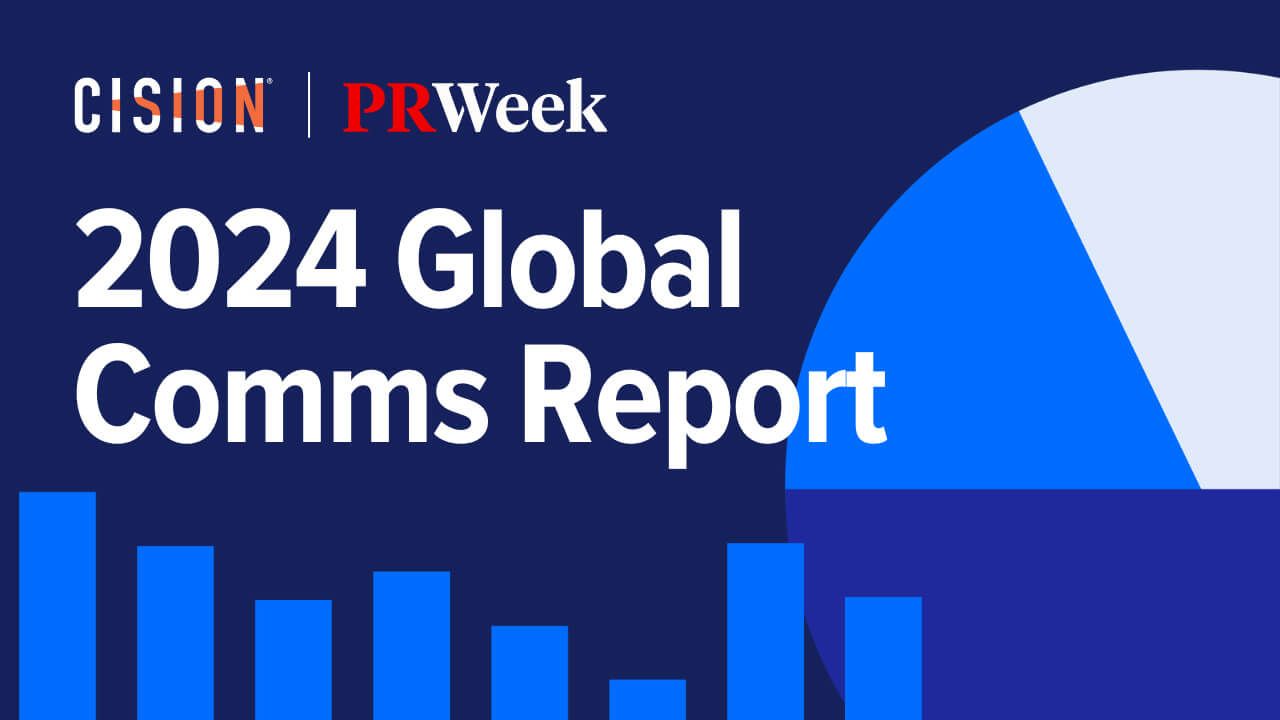What PR teams should expect in 2024: insights from the 2024 Global Comms Report
Explore how the 2024 global comms report sets new standards for pr teams, focusing on strategic influence, data reliance, and evolving media strategies.

PRWeek, in collaboration with Cision, has recently released the 2024 Global Comms Report titled "Elevating and Evolving." This report is based on a survey sent to communication professionals in various countries, such as the U.S., Canada, France, Germany, Sweden, the U.K., Australia, China, Hong Kong, and Singapore.
Its goal is to offer a comprehensive view of the changes happening in the PR and communication industry. It focuses on how the roles and responsibilities of PR practitioners, whether in agencies or internal teams, are evolving.
In the previous 2023 Global Comms Report, the emphasis was on how strategic communication professionals rely on data and analytics. In the 2024 edition, the report digs deeper into the advantages of having better, more reliable data, easier access to it, and better understanding of it.
The report also looks at how the roles of PR and communication professionals are expanding. It covers various areas like working with influencers, using social media, incorporating AI, and using KPIs. It demonstrates how these changes contribute to the financial success and strategic goals of organizations.
For PR agencies, the report offers insights into what clients will expect from PR activities in 2024, giving a glimpse of future demands. Internal PR teams can better understand the potential of PR and learn from global experiences, helping them align their strategies with emerging trends.
Rising expectations for PR impact on businesses

C-suite leaders now expect PR to directly influence key business metrics like revenue and company value. This shift shows PR's growing strategic importance within companies. The survey findings reveal a focus shift toward improving customer engagement and boosting sales, marked as top priorities by CEOs. This points to PR's changing role, now more crucial for impacting business results.
Tara Darrow, Vice President at T-Mobile, points out this change, stressing that PR has shifted from a mainly tactical role to one that's strategic. Her viewpoint, "If we’re not doing something that has an impact on the business, why are we doing it at all?" reflects a wider industry trend where the value of PR is judged by its ability to support the company's goals and financial health.
Additionally, the report highlights a new expectation for PR to prove its worth beyond its traditional scope. Executives increasingly see PR as a key player in delivering tangible business returns. This new view moves PR beyond just managing reputation or crises to being central in reaching business aims.
The role of PR is also becoming more important to company executives, as shown by the report. A significant 41% of those surveyed say they report directly to the CEO, and 92% have seen more engagement from the C-suite seeking their advice. This reflects a greater reliance on PR for strategic guidance and its crucial part in corporate decision-making.

How working models are preferred based on the expectations

The selection of working models is a significant consideration for executives aiming to optimize different environments to meet their needs. The 2024 Global Comms Report reveals that 57% of respondents work in a hybrid arrangement, 29% work fully remotely, and 14% are in a fully in-office setup. This data indicates a notable shift towards flexible work models in the industry.
Regional variations are apparent, with 63% of respondents in the U.S., 58% in Europe, and 40% in APAC adopting hybrid work. These differences showcase diverse approaches to hybrid and remote work globally.
Each working model has its unique benefits and serves distinct purposes. The hybrid model is viewed as a way to enhance creativity and problem-solving, especially during challenging times, while still offering the work-life balance associated with remote work. Conversely, companies that prefer a fully remote setup value the flexibility and independence it offers, allowing individuals to thrive outside a traditional office setting.

For those in fully in-office arrangements, the benefits include more productive collaboration and a sense of community. As highlighted by Nick Cowling and Tara, being together in the office supports informal learning from one another and is essential for brainstorming and addressing challenges directly.
These models are not in competition to determine which is superior but rather aim to showcase their strengths in promoting collaboration, creativity, and problem-solving in various contexts. Executives strategically choose a work model to align with the evolving expectations of their PR teams, ensuring effective alignment with the company's objectives.
Increasing preference for earned media

The report discusses how companies in various industries choose and rank their preferred media channels using the PESO model (Paid, Earned, Shared, Owned) for their communication strategies.
One clear trend is the increasing preference for earned media, with 33% of respondents relying heavily on it in their overall media strategies. This is up from the previous year's 30%. Brian Besanceney, representing the B2B and B2G sectors, emphasizes the ongoing importance of third-party validation through earned media.
Paid and owned media also play important roles, each accounting for 25% of the focus. While there was a slight decrease in the emphasis on paid media from the previous year (28% to 25%), both remain essential. This emphasis on paid and owned media is a response to the challenges of standing out in a crowded media landscape. Tara provides an example of how her team addressed this challenge by setting up "our own in-house journalists."
Shared media usage remains stable at 17% compared to the previous year, indicating its continued relevance in communication strategies.
However, Tara raises a valid concern about prioritizing one media type over another. "The best communications programs are integrated. They use data and analytics to adjust each component while it’s in the market to have an impact.” This perspective underscores the importance of a cohesive and adaptable approach to prioritizing media channels.

Everyday consumers take the lead as the highest-impact influencers

For more than ten years, brands have understood that individuals, aside from celebrity spokespeople, can impact how consumers behave. This is a strategic approach used by brands to increase sales, improve brand recognition, grow their audience, and achieve important business goals. But the crucial part is finding and working with the right influencers.
Companies were surveyed to identify which influencers they consider valuable in driving consumer behavior, ultimately leading to increased sales.
In terms of impact, everyday consumers take the lead, with more than 57% ranking them in the top three. Everyday consumers encompass individuals who provide product reviews on platforms and offer product recommendations through social media.
Corporate executives and employees follow closely behind, with 44% of respondents acknowledging their significant influence. They can provide genuine insights into the company's culture and operations. Brian highlights the importance of employees as influencers, stating, "Our most important audience is our employees, who, in many ways, are our most important influencers because they can offer that peek behind the curtain."
Niche or micro-influencers are also highly regarded, with 42% of the vote among the top three influencers. Their ability to authentically connect with specific audiences is a valuable asset.
Celebrities, on the other hand, have seen a decline in influence this year, with only 36% considering them among the top three in terms of impact. Nick offers a nuanced perspective, stating, "Celebrities are the original influencers. They still have a role." While celebrities can still sway consumer behavior, their impact is perceived to be diminishing in favor of more authentic and relatable influencers.

Additional key insights from the report: AI, data, and social media
Generative AI usage
Many PR and communication professionals (65%) are trying out generative AI. They use it for things like creating content, writing press releases, and researching their audience. However, not everyone is using it the same way. About 32% use it a lot, 33% use it sometimes, and others are still thinking about it (27%), don't plan to use it (7%), or aren't sure (1%).
Need for reliable data
There is a growing emphasis on measurement within the communication industry. Approximately 42% of professionals express a strong reliance on data and analytics, marking an increase from the 30% reported last year.
Social media reliance
The reliance on both earned (53%) and paid (46%) segments of social media has seen an annual uptick, indicating their continued significance in communication strategies.
The complete report is available for free: 2024 Global Comms Report: Elevating & Evolving
ContentGrow is an AI-powered talent network for brands and publishers to work with high-quality freelance writers and journalists worldwide. Sign up to get started or book a discovery call to learn more.




